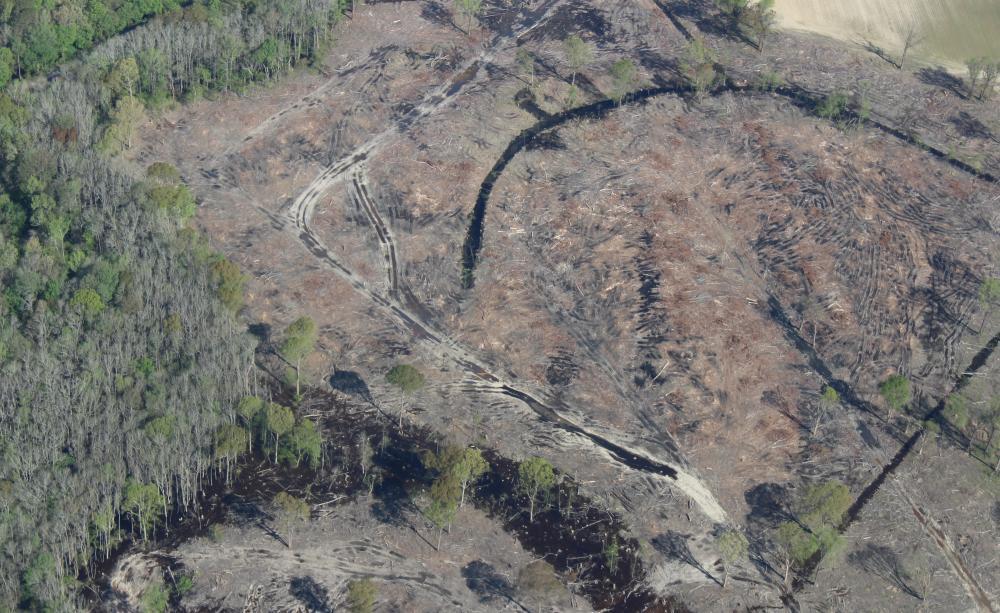Biomass and global forest restoration

Global forest restoration could help address the climate crisis – but misguided bioenergy policies are a threat.
Forests are some of the most incredible places on Earth—teeming with life, filtering our drinking water, and providing us with a number of outdoor recreation opportunities.
Trees are also the most effective means to capture and store carbon, making them our frontline defence against climate breakdown. Now, landmark research by Crowther Lab in Switzerland has quantified how global forest restoration could help us address the climate crisis.
The results are astounding. The researchers conclude that the restoration of Earth’s forests could capture two-thirds of man-made carbon emissions. The researchers called for planting 1.2 trillion trees to capture this potential.
Natural solutions
Of course, there’s no substitute for immediate cuts to greenhouse gas emissions—the kind that can only be achieved via massive reductions in the use of coal, oil and gas and their rapid replacement with low-carbon options, such as solar and wind.
Additionally, not all areas that could be forested should be forested, and this new research should appropriately be treated as an assessment of the global potential of our lands to support new tree cover, rather than a concrete roadmap for where and under what circumstances to expand forestlands.
However, this research does highlight that we cede an important tool in the fight against climate change if we don’t prioritise natural climate solutions and act collectively to conserve, restore and expand forests and other natural ecosystems that sequester and store carbon.
A global reforestation action plan requires governments around the world to back policies and programmes to support these efforts.
Critically, policies and programmes that work against these goals, such as misguided subsidy schemes in the European Union that incentivise the conversion of power stations to run on wood from forests—so-called “biomass”—are counterproductive and imperil our ability to avert the world consequences of climate change.
Pellet manufacturing
Burning forest biomass for energy emits large amounts of carbon dioxide (CO2), which persists in the atmosphere for decades or longer, even under the best-case scenario in which logged trees are immediately replaced with saplings (there’s no requirement that the mature trees be replaced with saplings at all).
The large new demand for wood created by support for biomass energy also results in more intensive and extensive logging of forests, thus depleting the very ecosystems that we depend on for sequestering and storing carbon.
According to the Crowther Lab study, more than half of the locations with the potential to restore continuous tree cover are in just six countries, the top three being Russia, the US and Canada. Unfortunately, these are countries where forests are under major threat, including as harvesting grounds for forest biomass to burn for electricity.
The US Southeast boasts some of the most precious and diverse forest ecosystems in the world. It’s also ground zero for wood pellet manufacturing and export to Europe and increasingly emerging markets in East Asia.
Year after year, a company called Enviva, the world’s largest wood pellet manufacturer, sources trees from mature hardwood forests. These trees are ground up and pressed into wood pellets and then exported via ships around the world to become fuel in power stations.
Dirty energy
The top markets for this dirty energy are in the European Union, where companies like Drax Power in the United Kingdom and Ørsted in Denmark, receive lucrative subsidies to burn biomass.
These energy giants don’t have to count smokestack emissions in quotas and policymakers can claim emissions reductions despite exacerbating issues of air pollution and pumping more carbon dioxide into the atmosphere.
Last year, the Intergovernmental Panel on Climate Change (IPCC) told us that limiting global temperature rise to 1.5°C requires cutting global greenhouse gas emissions in half by 2030 and reaching net zero emissions worldwide by 2050.
They also told us that every half degree difference above and beyond 1.5°C represents disproportionate additional climate-related suffering. Indeed, no effort should be spared to meet this goal.
The massive climate mitigation potential of a global reforestation agenda places in stark relief the choice between a future in which we prioritise maximising carbon storage by forests vs. one where forests are harvested and burnt for energy.
Zero-emission technologies
The fact is that reliance on energy produced from forest biomass is incompatible with the aim of phasing out carbon emissions.
Policies that promote the use of forest biomass as fuel must be scrapped immediately and biomass subsidies redirected to genuine zero-emission energy technologies.
In parallel, bold conservation agendas to keep existing natural forests intact and dramatically expand forested lands must be a priority of all governments seeking to address the climate emergency. The time to act—and plant trees—is now.